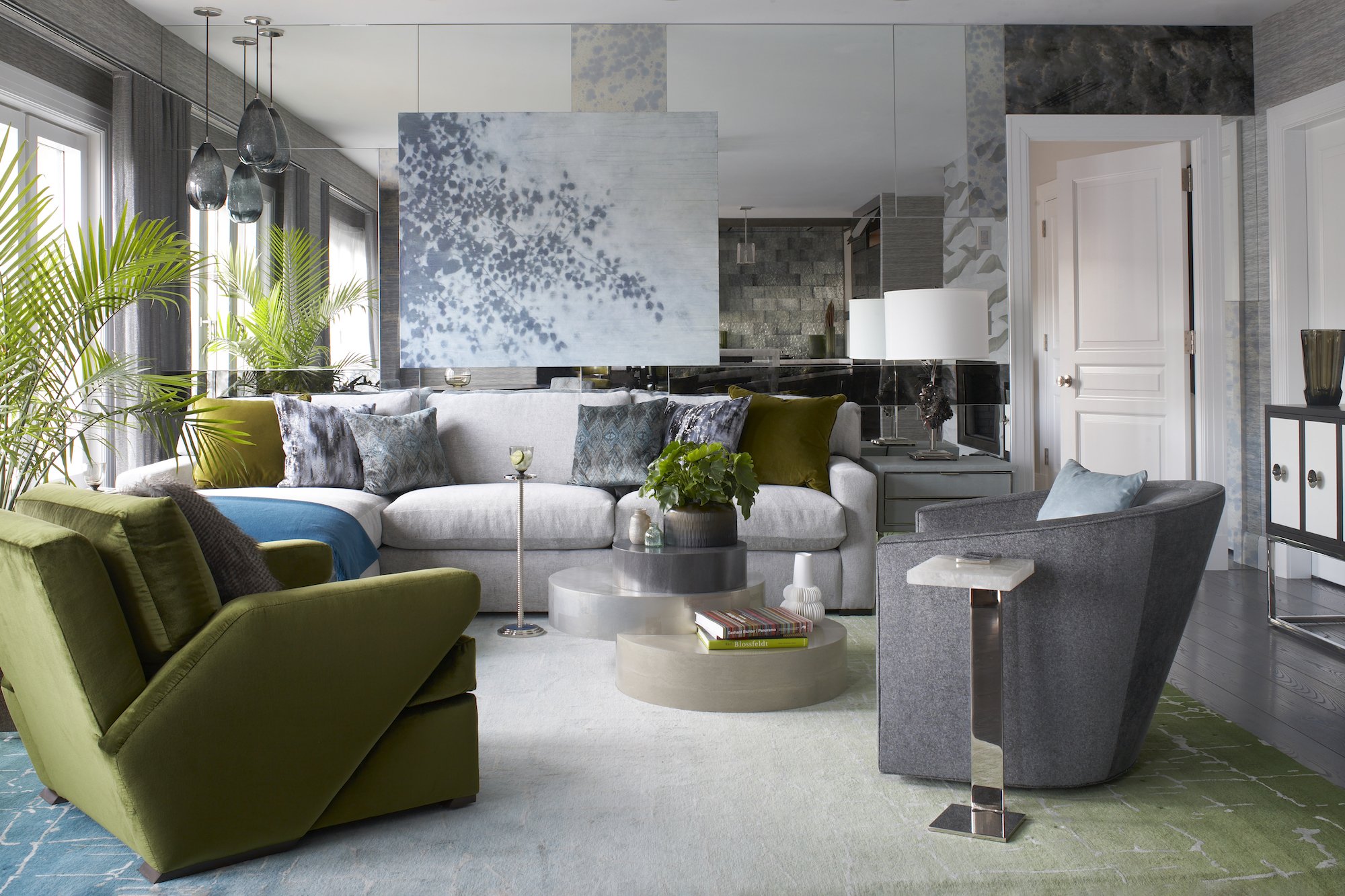My Go-To Fabric + Upholstery Tips
Learn which fabrics I love to specify for different pieces of furniture and accents.
Fabrics are an enormous component of our designs. They bring warmth, texture, color, comfort, and pattern to windows, furniture, floors, and even walls. Plus, their softness helps balance sleeker materials, such as tile, metallics, and glass. Overall, when I’m trying to put together a fabric scheme, my primary goal is creating variation in color and texture and to choose the best fabrics for their applications. Here’s my experienced advice for picking the right fabrics:
Choose durable fabrics for furniture
For major pieces, such as sofas, I always place a high priority on durability. A good way to check this is by examining the double-rub count, which means the number of times a fabric can be rubbed before it starts to pill. You’ll often find fabrics with 20,000 double rubs from major retailers, but I always aim for textiles that are 40,000 double rubs and above for lasting power.
Switch up your scheme with accents.
When you begin with a versatile fabric on your sofa, it’s easier to swap out accents if you want a refreshed look or a different color scheme. I often will choose a smaller print for chairs and then something bold and fun for throw pillows.
Consider the fabric’s composition
Cottons, polyesters, and velvets are a few of my go-to fabrics because they’re comfortable, easy to clean, and can help you achieve a wide range of looks. I love the luxuriousness of silk or viscose, but they’re delicate and notoriously difficult to clean. Instead of using them on a piece of furniture, I’m much more likely to specify them for a smaller accent, such as a pillow.
Select solids for large pieces
I usually pick solid colors for sofas because they provide a nice foundation to the design. This doesn’t mean you have to stick to white and gray; navy blue and hunter green are colors that are somewhat neutral but provide quiet depth to a space.
Elevate the design with details
How many extra trimmings we add to a design comes down to personal preference, but they’re a wonderful way to dress up an otherwise simple piece. For example, lining the leading edge of a drape with a stylish trim adds a punch to your window treatment. Likewise, tufting boosts the impact of a sectional or ottoman. Channel stitching is a modern take on the look.
Combine patterns thoughtfully
You may like the look of lots of different patterns, or you may gravitate toward more coordination. This is something we get a sense for during our kickoff meetings with our clients. Regardless, when mixing fabric patterns, you can achieve balance by blending different scales and subject matter. For example, try pairing an organic design with a geometric print.
Plan for usage
When choosing fabrics, consider how you will use the piece. For an ottoman, where people may be resting their feet on it or placing food and drink; leather, faux leather, or an outdoor fabric are wipeable choices. Likewise, area rugs are an opportunity to bring in warmth, texture, and they ground a space; but in a high-traffic area, you may select an indoor/outdoor material or something with lots of pattern that hides little imperfections. Same for under a dining table or in spaces where children and pets hang out.
Think about the setting
In a coastal home, try bringing in outdoor fabrics, as they’re excellent at standing up to humidity and sunlight. Colorfastness of your fabrics should also be considered if your home has giant windows that stream in lots of light—such as an urban high-rise or loft. By the beach, we also tend to avoid 100% linen, jute, and sisal, which can rot in that environment.
Next time, you’re trying to pick a fabric, I hope you remember to think of the space as a whole and use these tips!
Until next time,










